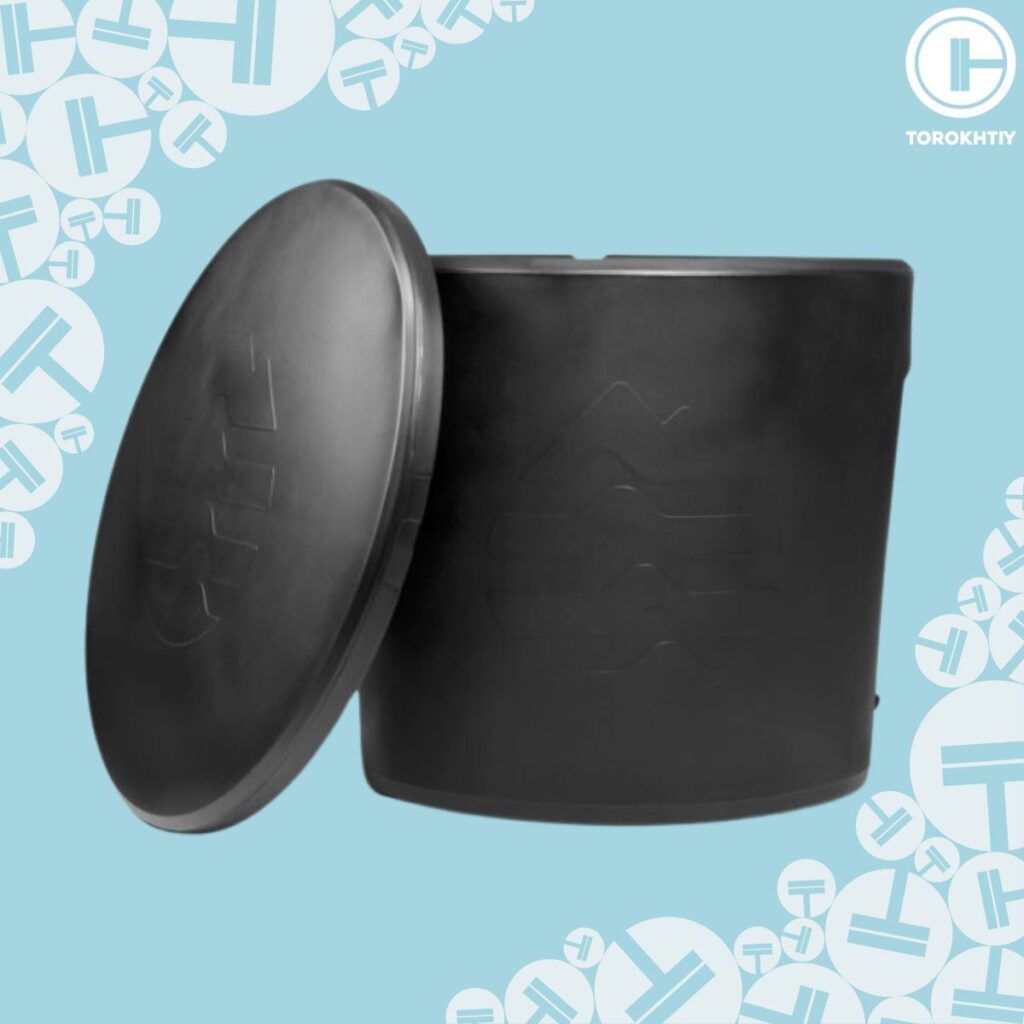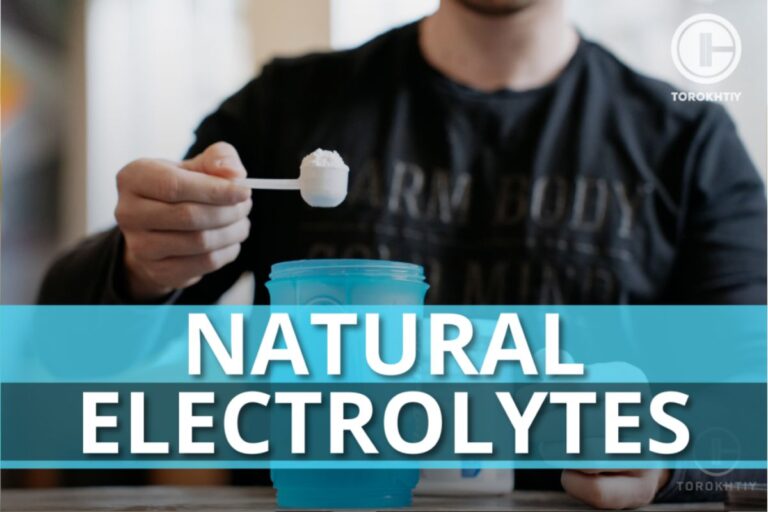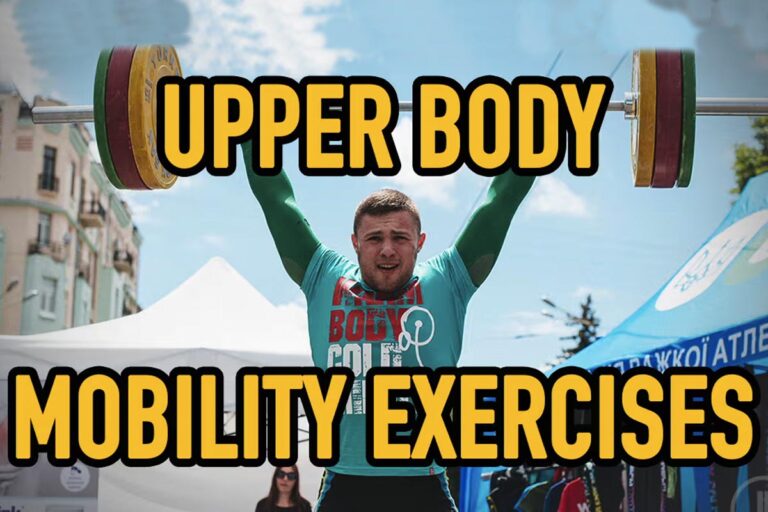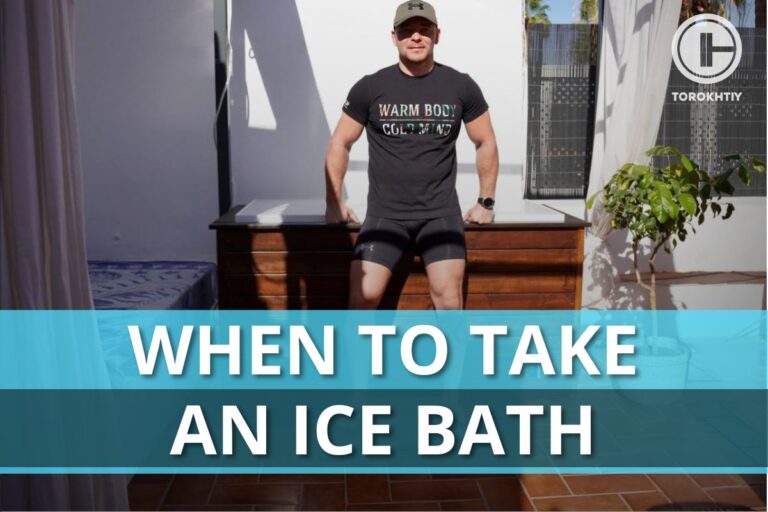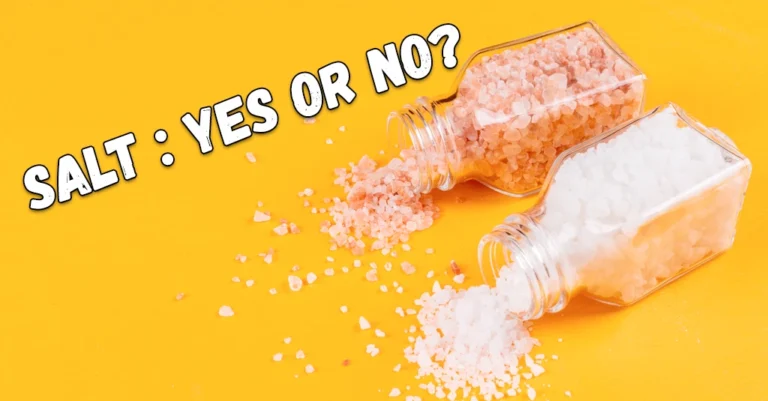Cryotherapy Vs Ice Bath: Which Is More Effective?
Cryotherapy vs ice bath – it’s a hot topic when it comes to recovery and wellness. Just like regular exercise and a balanced diet are the key to maintaining good health, so is the way to recover from physical exertion.
Both cryotherapy and ice baths have gained popularity for their ability to help with sore muscles, reduce inflammation, and enhance overall recovery, but which is better? What exactly sets them apart? Don’t both just make you cold and that’s how you get the benefits?
What is the difference between cryotherapy vs ice bath? Cryotherapy exposes your body to extremely cold, dry air (usually below -148°F) for approximately 3 minutes in a specialized chamber. Ice baths require a tub filled with ice-cold water (usually 33.8-59°F) for 1-60 minutes(depending on exposure time).
Well, yes, they both make you cold. Really cold. But one works with air, and the other uses water. Each of these methods has its own advantages, and understanding them will have a huge impact on recovery or managing chronic pain.
Let’s chill out together and see which cold therapy will suit you better – ice bath vs cryotherapy.
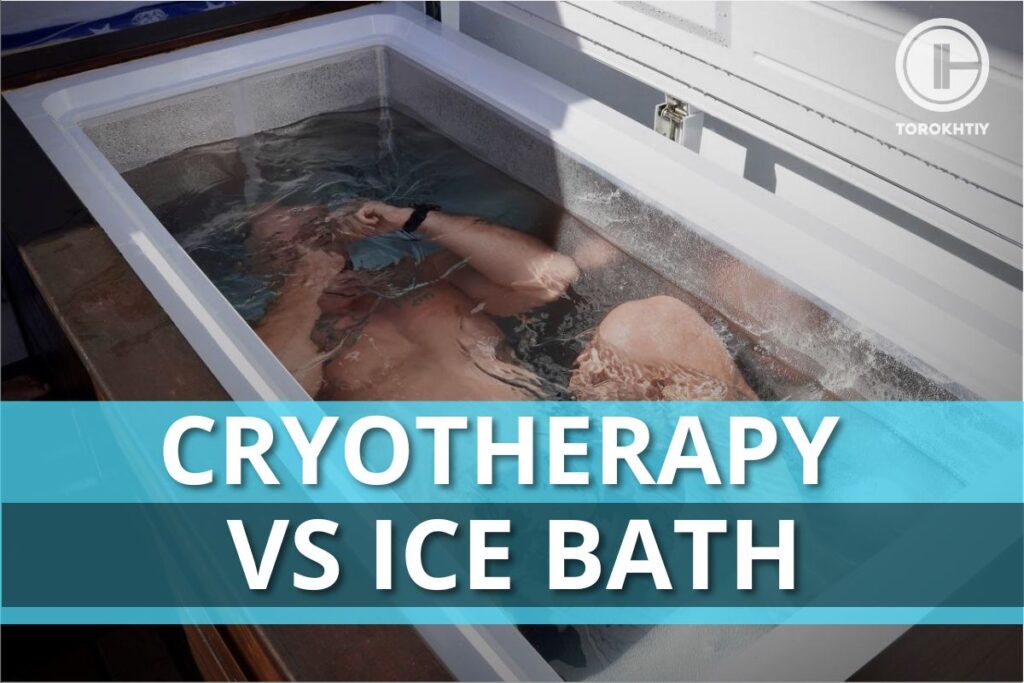
What Is Ice Bathing?
Some people may think taking an ice bath is a masochistic way to get clean, and that’s understandable – you’re taking a bath in icy cold water. But this has nothing to do with getting clean (or relaxed!).
An ice bath is also known as cold water immersion or ice water therapy, and it’s a practice where people get in a tub filled with cold water (usually chilled with ice). The temperature of the water is usually around 34-59°F (1-15°C), depending on the time you want to spend in the ice bath.
Here there are two protocol options when it comes to the exposure time: brief exposure and long exposure. Brief exposure is about 1-3 minute immersion in a water temperature of 33.8-48.2°F (1-9°C); Long exposure is anywhere from 30-60 minutes in a water temperature of around 59°F (15°C).
Ice baths are super popular, especially among athletes and fitness junkies, because it plays a big part in the recovery process. The principle behind ice bathing is based on how our bodies respond to the cold.
When you get in cold water, your blood vessels constrict and reduce the blood flow to the extremities, which decreases inflammation and muscle soreness.
As your body warms up again, vasoconstriction gives way to vasodilation, which helps flush out metabolic waste from the muscles. Taking an ice bath on a regular basis is believed to enhance recovery after physical activities, decrease fatigue, and improve your well-being in general.
Although athletes love it like no one else, ice baths are not limited to them. A lot of people take ice baths for different health reasons, like better circulation and mental resilience. But as useful as they are, you should consult your doctor before giving them a try because extreme cold can be risky, especially for those with health conditions.

What Is Cryotherapy?
If an ice bath makes you cold, cryotherapy freezes the bejesus out of you. Think of it as an ice bath’s older brother that loves taking things to the extremes.
Also called whole body cryotherapy (WBC), cryotherapy is a cutting-edge cold therapy that exposes your body to extremely cold, dry air for a short period of time (usually from 1 to 3 minutes). The temperatures in the cryotherapy chamber are literally freezing and they can plummet to between -200°and -240°F.
It originated in Japan as a treatment for rheumatoid arthritis, but it’s since become popular for various health reasons and wellness purposes.
Extreme cold exposure triggers the body’s natural fight-or-flight response, which results in reduced inflammation, pain relief, and better muscle recovery. Regardless of the extreme cold, cryotherapy is safe for the skin. People who really like cryotherapy swear by some other benefits as well, like increased metabolism, better sleep, and even a mood boost because of the release of endorphins.
Just like with ice baths, before you try cryotherapy, have a word with your doctor to avoid potential risks for your health.
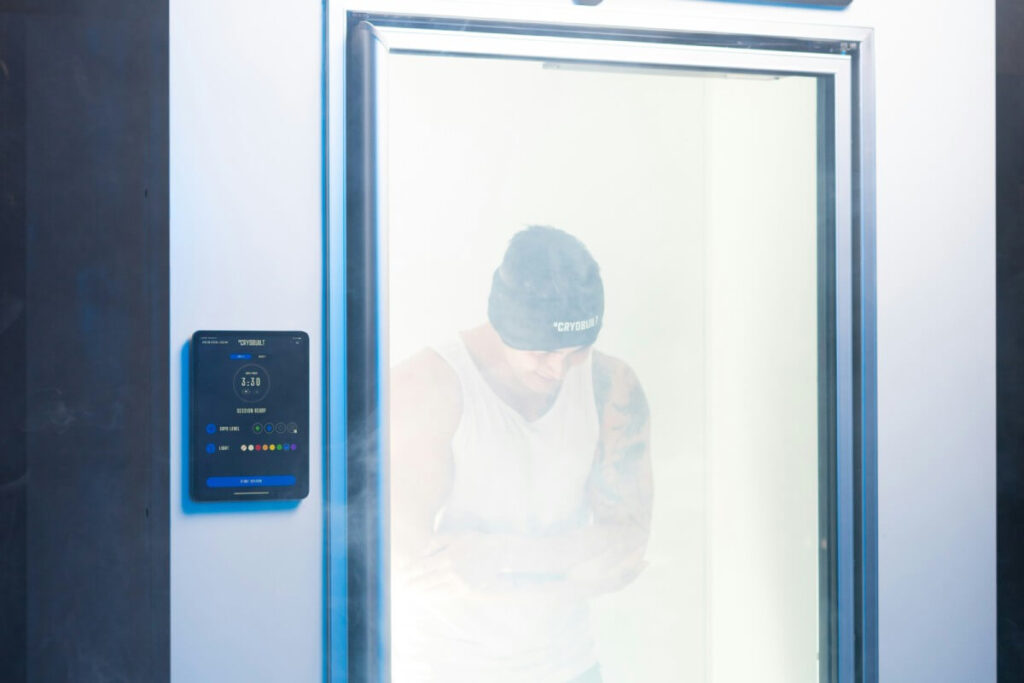
Differences Between Ice Bath and Cryotherapy
One makes you cold, the other one makes you really, really cold. Although they both have their uses and you don’t necessarily have to choose between ice bath or cryotherapy, it’s good to know the differences. You never know; one might be perfect for you, while the other could just be a waste of time.
You already know the differences when it comes to temperature and duration, so let’s see some others.
1. How It Works
An ice bath narrows blood vessels to reduce the blood flow and decrease inflammation. It also numbs the nerve endings, which helps with any pain. Cryotherapy narrows the blood vessels, too, but it relies on quick, intense cold exposure to trigger the release of anti-inflammatory molecules and endorphins to provide pain relief.
2. Method of Cooling
When you get in direct contact with the cold water during an ice bath, the cold removes the heat from your body through conduction. Cryotherapy uses cold air to rapidly lower your body temperature, and this effect is more superficial compared to the penetrating cold of an ice bath.
3. Accessibility and Convenience
All you need for an ice bath is your standard bathtub and some ice, so it’s a more accessible option. Cryotherapy needs specialized equipment and facilities, so not only is it more expensive, but it’s also less practical.
So, which one is the winner here, cryotherapy or cold plunge? The latter, for sure.
4. Recovery and Effectiveness
An ice bath does a nice job at treating sore muscles and inflammation that results from exercise, and the longer cold exposure can be more effective for deep tissue recovery.
Cryotherapy is mostly used for quick recovery and pain relief, so it’s more effective for overall wellness and systemic inflammatory response.
5. Experience and Comfort
Being in cold water for a longer period of time is challenging and relatively uncomfortable, especially for beginners. Cryotherapy, although it uses lower temperature, is usually more tolerable because you only need to withstand the cold for a few minutes.
| FEATURE | ICE BATH | CRYOTHERAPY |
|---|---|---|
| Temperature Range | 50-59°F | -166 to -220°F |
| Method of Cooling | Direct contact with cold water | Exposure to air cooled with nitrogen |
| Duration | 10-20 minutes | 1-3 minutes |
| Accessibility | Easily done at home with bathtub and ice | Need specialized equipment and facilities |
| Primary Use | Muscle soreness, deep tissue recovery | Quick recovery, pain relief, systemic response |
| Comfort | Can be uncomfortable because of the prolonged cold immersion | More tolerable because it last shorter than an ice bath and uses dry air instead of water |
Pros and Cons of Ice Bathing
Well, the biggest pro is the amazing, comforting, relaxing feeling you get from sitting in ice cold water for minutes that feel like hours. Just kidding, of course! Although it’s not the most pleasant thing in the world, an ice bath is popular for a reason.
Ice baths are known for being super effective at reducing inflammation and helping with sore muscles, which is particularly useful after a workout.
This means that an ice bath can help speed up recovery. It’s also effective at improving your mental resilience and stress management because you’re actively working through the discomfort and making yourself stay in the cold water despite wanting to run out and grab a hot towel.
Cold water immersion (CWI) can improve your mood and alertness by the release of catecholamines like dopamine, adrenaline and noradrenaline. That dopamine kick can last for hours. For this reason, it seems CWI can be helpful in treating depression and anxiety among some folks.

But there are some cons associated with ice bathing, and the most obvious one is the discomfort and even pain for those that are not used to it. Prolonged exposure to cold water can also lead to hypothermia or cold-induced injuries if you’re not careful.
The one that many folks can miss is that if your training goal is to build muscle and get stronger you should avoid cold therapy immediately after the training session. You should wait at least 4-6h or even better, do it the next day in the morning.
Getting an ice bath right after workout can blunt some training adaptations and basically result in less muscle build.
Another issue is that ice baths are not suitable for everyone. People with certain conditions, like heart disease, hypertension, or peripheral vascular disease should avoid ice baths completely.
Positives:
Could be better:
Ice Barrel We Recommend for an Ice Bath
If you don’t feel like filling your bathtub with a bunch of ice, an ice barrel may be a great alternative. This is a sleek, fully insulated barrel that’s easy to use and it even has a seat inside.
The polyurethane foam keeps it insulated in all weather conditions, so you can use this all year round. The lid is UV resistant, so the color won’t fade even if you use this barrel outside.

The barrel is made in the USA using recycled materials, and it weighs 61 lbs empty, and 700 lbs when it’s filled. It can hold 77 gallons of water and it’s covered by a limited lifetime warranty. This barrel is the perfect way to enjoy an ice bath without breaking the bank.
Positives:
Could be better:
Pros and Cons of Cryotherapy
Cryotherapy is a very modern way to reap the benefits of the way our bodies respond to being exposed to cold temperatures.
It’s famous for being able to reduce the inflammation in your muscles, so it’s no wonder it’s popular with athletes and people who are dealing with chronic pain. The extreme cold cryotherapy chamber exposes you to triggers the body’s natural healing mechanisms and it can speed up the time it takes to recover.
Cryotherapy sessions are also time-efficient (expensive tho), and everyone can work them into their schedule because they take 1-3 minutes (if we don’t count driving to the facility that has a cryochamber).
These sessions are also known to boost your mood and energy level because deliberate cold exposure is known for triggering the release of endorphins.
Of course, there are some issues with cryotherapy that you shouldn’t overlook. The biggest concern is the risk of frostbite and cold burns if the procedure is not done correctly. Even though the extremely low temperatures might seem scary/intimidating, the cold dry air actually feels way more pleasant than an ice bath immersion.
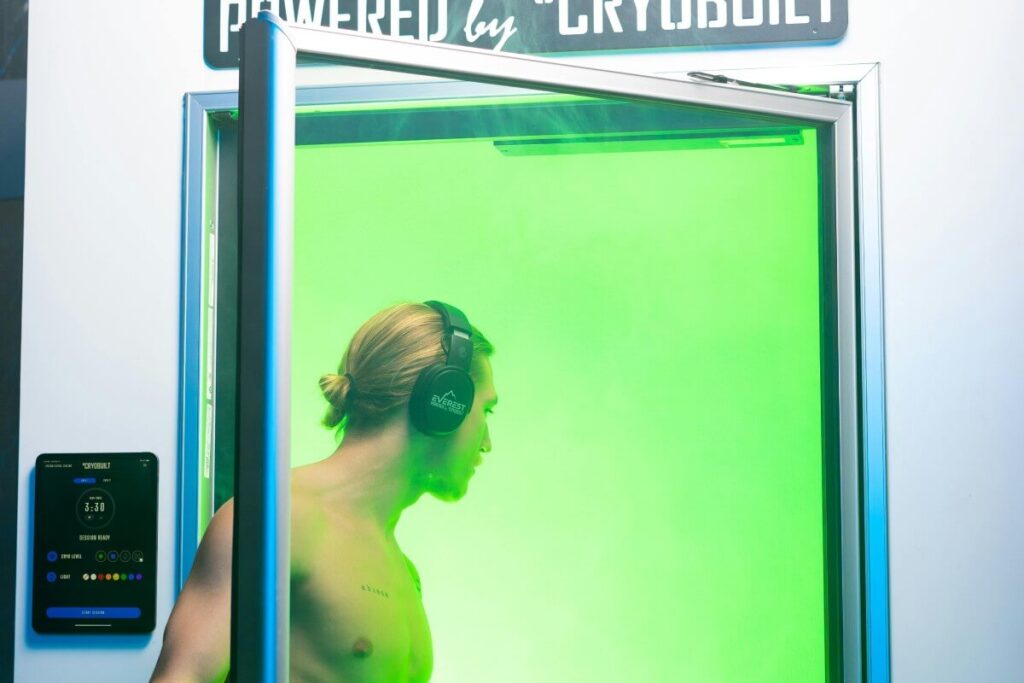
Accessibility should also be considered – cryotherapy needs a specialized chamber and facility, as well as people who know what they’re doing. As opposed to an ice bath, where you can just fill a tub with ice, cryotherapy is much more serious and needs to be supervised.
And finally, beyond all of these factors stands the price. Don’t really think you want to buy one for your house 🙂 so driving to the facility that got one, the cost of a session etc. becomes much more expensive than jumping into cold water that maybe needs to be cooled with ice (unless you have your DIY ice bath or water chiller).
Something that cryotherapy and ice bathing have in common is that they’re not suitable for people with certain health conditions. If you have cardiovascular problems or severe hypertension, pass on cryotherapy.
Positives:
Could be better:
FAQ
Is Cryotherapy and Ice Baths the Same?
A lot of people wonder, ‘is cryotherapy the same as an ice bath?’, and the answer is – no.
For an ice bath, you need to immerse yourself in icy water and stay there from a couple of minutes up to an hour depending on the water temperature and your cold adaptation, while cryotherapy exposes your body to extremely cold, dry air for a very brief period (around 1-3 minutes).
Your body will also have a different response to an ice bath compared to cryotherapy. Basically, the evidence is quite strong about cold water immersion being a more effective treatment than full-body (or partial-body) cryotherapy. Which is awesome because it’s cheaper and more accessible.
Which Is Harder: Cryotherapy or Ice Bath?
Which of these therapies is harder depends on the person and how they tolerate the cold. Usually, An ice bath is more challenging. Cryotherapy involves significantly lower temperatures, but it’s very quick and dry.
Cryotherapy temperatures look kind of scary, but it’s the water that “cuts” you deeply 😉 because of water characteristics like, for example, thermal conductivity – it has more than 20x higher thermal conductivity than air, which means it is much better when it comes to heat transfer.
Which Is Better: Cryo vs Ice Bath?
When comparing the two – ice baths are better. They are more effective (which is backed by research and studies). Ice baths are also much cheaper and are available to almost everyone, while cryo chambers are only available to those who have the time and money to go to a facility that has a cryo chamber.
Conclusion
Brrr… Are you cold from this topic? If you are – good. Now you know being cold can actually have some benefits, although it’s uncomfortable. As with anything new and somewhat extreme, be sure to check with your doctor if any of these cold therapies can work for you and what you need to pay attention to to prevent any issues.
If your choice is an ice bath, give Ice Barrel 300 a try. You can use your bathtub, of course, but the barrel we recommend will keep you in the best position during the bath so you can reap all the benefits.
What do you think about using cold temperatures as therapy? What do you think, is cryotherapy better than an ice bath? Which of these two do you think would work better for you and why?
Once you’ve warmed up, leave a comment and let us know what you think of this subject!
I’m off with my muscles all recovered!
Also read:
- What to Do After an Ice Bath
- Best Budget Cold Plunge
- Ice Bath Before Workout
- How Much Ice for Ice Bath
- Best Ice Bath Tubs
References:
- Anna Misiorek, Magdalena Szyszkowska-Kępińska “Evaluation of the influence of whole-body cryotherapy on selected skin parameters in healthy individuals: Pilot study,” Cryobiology 100 (June 2021): 77-80.
- Laura Williamson “You’re not a polar bear: The plunge into cold water comes with risks,” American Heart Association News, https://www.heart.org/en/news /2022/12/09/youre-not-a-polar-bear-the-plunge-into-cold-water-comes-with-risks (accessed January 19th, 2024)
- Maria Dyah Kurniasari, Karen A. Monsen, Shuen Fu Weng, Chyn Yng Yang, Hsiu Ting Tsai “Cold Water Immersion Directly and Mediated by Alleviated Pain to Promote Quality of Life in Indonesian with Gout Arthritis: A Community-based Randomized Controlled Trial,” Biological Research for Nursing 24, no. 2 (April 2022): 245-258.
- “Brrr! What To Know About Cold Plunges,” Cleveland Clinic, https://health.clevelandclinic.org/what-to-know-about-cold-plunges (accessed January 19th, 2024)
- Naomi J. Crystal, David H. Townson, Summer B. Cook, Dain P. LaRoche “Effect of cryotherapy on muscle recovery and inflammation following a bout of damaging exercise,” European Journal of Applied Physiology 113, no. 10 (October 2013): 2577-2586.
- Wafa Douzi, Olivier Dupuy, Maxence Tanneau, Geoffroy Boucard, Romain Bouzigon, Benoit Dugué “3-min whole body cryotherapy/cryostimulation after training in the evening improves sleep quality in physically active men,” European Journal of Sport Science 19, no. 6 (July 2019): 860-867.
- 7. E Hohenauer, J T Costello, R Stoop, U M Küng, P Clarys, T Deliens, R Clijsen, “Cold-water or partial-body cryotherapy? Comparison of physiological responses and recovery following muscle damage,” Scandinavian Journal of Medicine & Science in Sports, vol. 28, no. 3, pp. 1252-1262, Mar. 2018, https://pubmed.ncbi.nlm.nih.gov/29130570/ (accessed January 30th, 2024)8. Laura J Wilson, Emma Cockburn, Katherine Paice, Scott Sinclair, Tanwir Faki, Frank A Hills, Marcela B Gondek, Alyssa Wood, Lygeri Dimitriou, “Recovery following a marathon: a comparison of cold water immersion, whole body cryotherapy and a placebo control,” European Journal of Applied Physiology, vol. 118, no. 1, pp. 153-163, Jan. 2018, https://pubmed.ncbi.nlm.nih.gov/29127510/ (accessed January 30th, 2024)
- Photos by CryoBuilt Everest: unsplash.com
Why Trust Us?
With over 20 years in Olympic Weightlifting, our team does its best to provide the audience with ultimate support and meet the needs and requirements of advanced athletes and professional lifters, as well as people who strive to open new opportunities and develop their physical capabilities with us.
By trusting the recommendations of our certified experts in coaching, nutrition, dietology, and sports training programming, as well as scientific consultants, and physiotherapists, we provide you with thorough, well-considered, and scientifically proven content. All the information given in the articles concerning workout programming, separate exercises, and athletic performance, in general, is based on verified data. We ensure that you can rely on our professionals’ pieces of advice and recommendations that can be treated as personalized ones which will benefit you and fully meet your needs.
The product testing process is described in more detail here
Author: Jacek Szymanowski
Certified Nutritionist,
M.Sc.Eng. Biotechnology
Performance Architect,
Strength and Conditioning Specialist
With over 30 years of fighting experience, specialization in nutrition coaching for athletes, and expertise in metabolic health and dietary strategies, Jacek offers a comprehensive approach to optimizing your performance and well-being. Backed by a Master of Science degree in Biotechnology, Jacek remains at the forefront of scientific advancements, ensuring that his coaching is always evidence-based and up-to-date.

